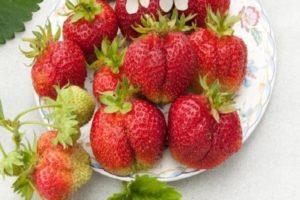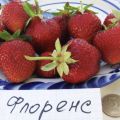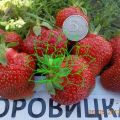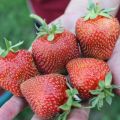Description and characteristics of the strawberry variety Vicoda, cultivation and reproduction
The Vicoda strawberry variety is a product of the work of Dutch breeders, a noble species that perfectly adapts to different conditions. High-yielding, gaining popularity. It withstands both summer heat and overwintering in different climatic zones.
Variety characteristics
The bush is tall, strong, with a developed root system and large ribbed leaves. Shoots and petioles are strong, and a small number of tendrils makes maintenance easier.
The berries are large, red, cone-shaped, weighing on average 50-70 g. The tip of the berry has a white tint during technical maturity. The taste is sweet and sour, the pulp is dense. The aroma is easily recognizable, it honors notes of ripe cherry.
The variety is late, the harvest is in the second half of July, when other varieties of garden strawberries no longer bear fruit. On average, up to 800 g of fruits are collected from a bush. Harvesting takes place in one wave.
Variety value and disadvantages
The tight skin of the fruit allows it to be transported over long distances without losing its presentation and taste. The variety is practically not susceptible to gray rot and verticillosis, the fruits are not afraid of spotting. Sepal leaves very easily, thanks to which the variety is well stored. The first fruits are the largest and heaviest, double berries often grow.
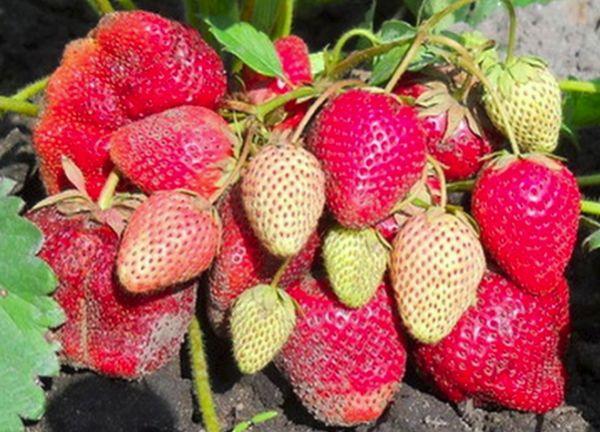
The undoubted advantages include:
- High productivity.
- Winter hardiness.
- Adaptability.
- Disease and pest resistance.
- Versatility in use: the berries are tasty raw, they also make good preparations.
There are also several disadvantages:
- In hot seasons, the density of strawberries may decrease.
- The need for large distances between adjacent bushes, which is why Vicoda strawberries are not convenient for growing in very small areas.
Growing garden strawberries
Do not delay planting, it is done in early spring, immediately after warming up the earth. Planting for the winter takes place at the end of August; at later dates, the plant's resistance to frost may decrease.
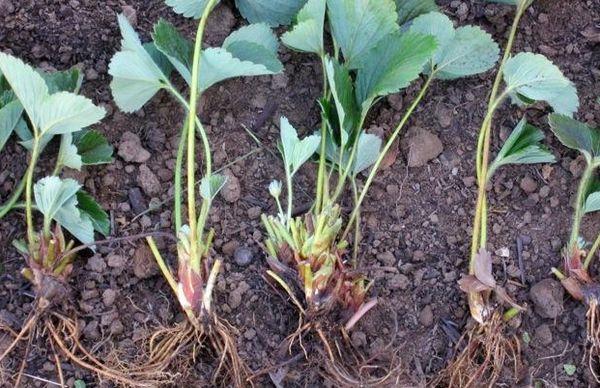
Site selection for planting and soil preparation
Strawberries of the Vikoda variety are not exacting to the type of soil, but this indicator affects the yield, preference is given to chernozem, gray forest soils and light loamy soils. The optimal predecessors on the site are onions and garlic, cereals. The best conditions for the Vicoda strawberry variety are considered to be acidic soil with a pH in the range of 5-6.5.
Before planting, the seedlings are "hardened" - the gardener keeps them in a cool room for 1-2 days. This procedure will make the bushes more resistant to external conditions. Like other varieties of garden strawberries, Vicoda loves the sun, and its yield on the sunny side is much higher, the berries form faster and reach ripeness.
To improve the yield, young strawberries are planted in several seedlings in one hole, which will ensure quick engraftment and adaptation of the root system.
Planting young seedlings together with old strawberries also gives a good result. When planting, plants alternate so that the new ones are surrounded by the old ones. This will protect the former from the wind.

Soil preparation stages:
- Digging the site. The earth loosens, becomes soft. In autumn, pests are removed by digging, the soil is saturated with moisture.
- Weed removal is carried out during loosening, which will ensure normal root development and air access.
- Soil nutrition. During the preparation process, up to 5 kg of organic and 40 g of mineral fertilizers are applied for each square meter. An excess of nitrogen should not be allowed, it can be detrimental to the plant.
Selection of seedlings
You need to choose strong, healthy seedlings. Optimal parameters of seedlings:
- root necks with a diameter of 6 mm;
- root processes from 7 cm;
- not damaged apical kidney;
- 3 to 5 leaves.
Planting in stages
It is necessary to plant Vikoda strawberries in cloudy weather, and if this is not possible, shade the seedlings within two weeks after planting.
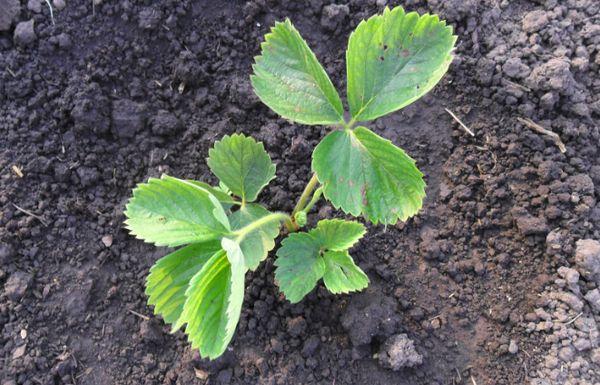
Description of disembarkation in stages:
- Holes are formed with gaps between the bushes 40 cm, inter-row from 50 to 60 cm.Excessively dense planting is fraught with a lack of light and nutrition.
- Water is poured into the formed pits and landing is performed. Strawberry roots should be placed loosely. To quickly take root, they are tightly covered with earth, leaving a growth point on the surface.
- The soil is compacted and additionally moistened.
- Mulching is carried out to avoid the appearance of a crust. For this, humus is used.
With spring planting, fruiting is expected as early as next year.
Care rules
Vicoda is unpretentious, but for a rich harvest, you need to follow a number of care rules.
Watering
The best solution would be sprinkling and drip irrigation. Vicoda is moisture dependent and with scanty natural rainfall it needs careful watering. However, waterlogging is undesirable, because of it the roots rot.
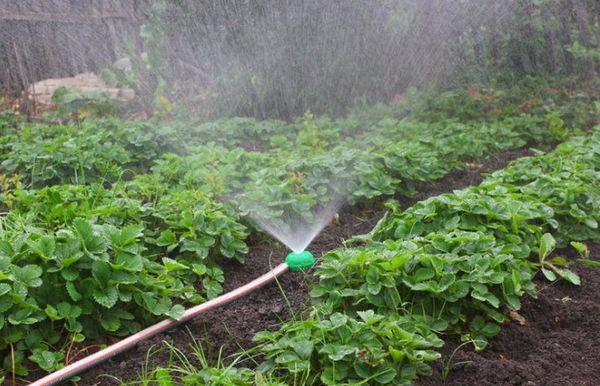
In spring, weekly watering is enough, in summer 2-3, in autumn - up to 2 times a week.
Top dressing
Top dressing is used both organic and mineral elements. It is better to fertilize in spring when the bush is growing and needs strengthening.
Loosening and weeding
Weeding and loosening are carried out simultaneously, as needed throughout the season. This ensures oxygen access, better soil moisture.
Mulching
When the first fruits have set, mulching must be performed for the first time, the second is carried out in late autumn. Peat or sawdust is recommended, laid with a layer thickness of 5-6 cm. It is not necessary to cover the plant itself with mulch.
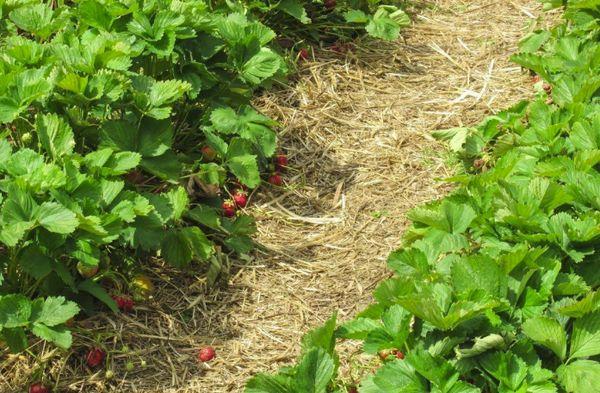
Preparing for winter
In the fall, the areas of the root system that have come to the surface are covered with soil. Old and dry foliage is removed. To increase resistance to frost, you can cover the ground with straw or sawdust, but remove this layer in spring. In November, the site is covered with spruce branches.
Treatment against diseases and pests
Strawberry variety Vicoda is highly resistant to various pathologies, but it can also be affected by gray rot. All affected berries are harvested urgently to avoid the spread of this fungal disease.During the growing season, strawberries should be treated with Horus and Fundazol, and repeated after harvesting. "Horus" will help to get rid of powdery mildew.
The most dangerous pest is a transparent mite. It is destroyed by treatment with Actellik, produced before August 10.

Breeding types
Vicoda reproduces both by whiskers and by seeds or division.
Mustache
The plant has a few antennae, therefore, for the purpose of reproduction, it is advisable to partially cut off the flowers, which will direct the force towards proper development.
After harvesting, straighten those with mustaches with rosettes from the most fruitful bushes, sprinkle the rosettes themselves with earth, leaving the hearts open. In early autumn, the bushes are planted in a prepared place.
By dividing the bush
Strong, healthy bushes with several tops with rosettes are dug out, the rosettes are separated. New bushes are planted so that the roots are completely underground, watered. After planting, these bushes can bear fruit in the first year.
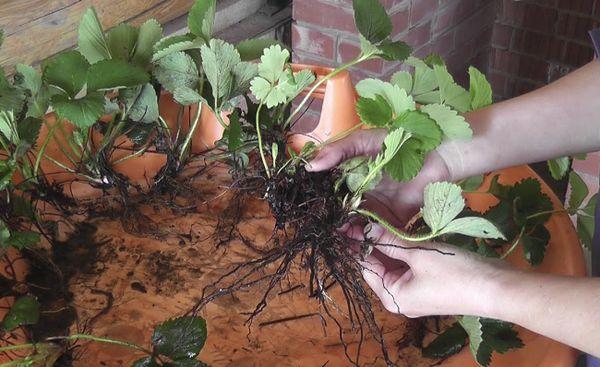
Seeds
This is the most unpopular way of breeding Vicoda and usually doesn't make sense.
When using seeds for propagation, it is difficult to predict which maternal traits will be transferred to a new plant. There is a risk of getting low quality berries.
Harvesting and storage
For storage, the berries are harvested without waiting for full maturity for several days. Smaller and drier berries are better stored. It is better to pick the garden strawberries left for storage together with the stalk. Store in boxes covered with newspaper. The fewer layers of berries are laid, the better. There is no need to sort out the berries before storage, it is better to do this after delivery to the place.
Harvested in the morning or evening. After that, the berries must be cooled to 0-2 degrees. Such a berry will be stored somewhat in the refrigerator in a glass container, without losing its freshness. Do not wash before storage.
Vicoda is a garden strawberry variety that is rapidly gaining popularity due to a number of advantages. This relatively unpretentious plant with delicious berries is now massively grown both on farms and in small household plots.
